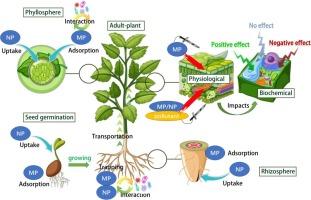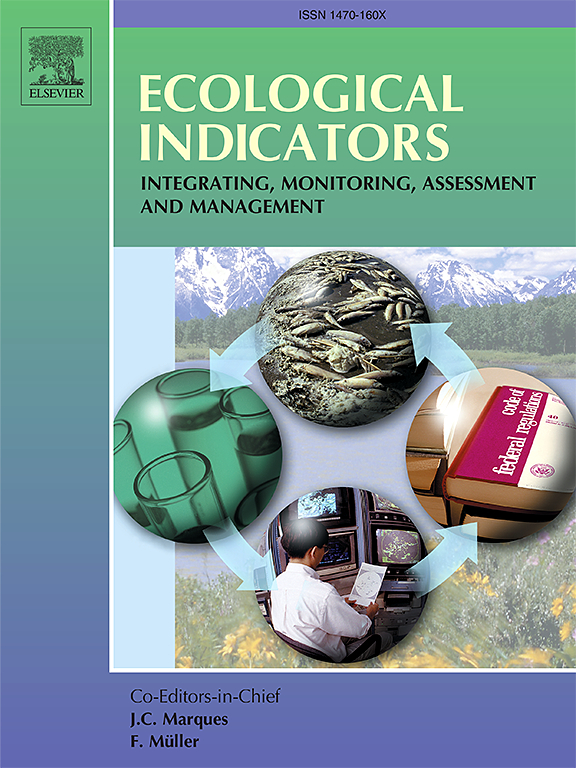A vegetation strategy to balance the hazardous level of microplastics in the land–sea interface through rhizosphere remediation
IF 7
2区 环境科学与生态学
Q1 ENVIRONMENTAL SCIENCES
引用次数: 0
Abstract
Microplastic (MP) pollution is an emerging threat to the natural environment and has become a global problem. Plants have been used to remove heavy metals, toxic organic pollutants, and MPs from contaminated environments. However, current research on the interaction between MPs and plants has focused on the food safety evaluation of terrestrial plants, such as crops and vegetables. There are, consequently, limited studies on aquatic plants, particularly those at land–sea interfaces, and their remediation potential. To address this research gap, the present study employed a bibliometric analysis and statistics from Web of Science (WoS) data from 2017 to 2023 to detail the interactions between MPs and plants. Because the study of aquatic plants was far less extensive than that of terrestrial plants, there was a need to draw analogies regarding how different plant species interact with various microplastics. This primarily pertains to the following aspects: direct and indirect effects of MPs on plants (including combined pollution), which included growth and development; nutrient intake; and physiological, biochemical, and genetic functions. The growth environments and physiological structures of aquatic plants and terrestrial plants differed, resulted in a greater potential for the root systems of aquatic plants to capture MPs. The impacts of MPs on the microbial processes in rhizospheres and phyllospheres in aquatic plants were also assessed because these plants are often used to remediate contaminated environments and wastewater treatment in the form of natural and constructed wetlands. Therefore, we proposed the potential of phytoremediation, particularly by aquatic plants, and future research directions related to MPs in this study.

通过根际修复平衡陆海界面微塑料危险水平的植被策略
微塑料污染是对自然环境的新威胁,已成为一个全球性问题。植物已被用于去除污染环境中的重金属、有毒有机污染物和MPs。然而,目前对MPs与植物相互作用的研究主要集中在作物和蔬菜等陆生植物的食品安全评价上。因此,对水生植物,特别是陆海界面水生植物及其修复潜力的研究有限。为了弥补这一研究空白,本研究采用了2017年至2023年Web of Science (WoS)数据的文献计量学分析和统计,详细介绍了MPs与植物之间的相互作用。由于对水生植物的研究远不如陆生植物广泛,因此有必要对不同植物物种如何与各种微塑料相互作用进行类比。这主要涉及以下几个方面:MPs对植物的直接和间接影响(包括复合污染),包括生长和发育;营养摄入;以及生理、生化和遗传功能。水生植物和陆生植物的生长环境和生理结构不同,导致水生植物根系捕获MPs的潜力更大。由于水生植物通常以天然湿地和人工湿地的形式用于修复污染环境和废水处理,因此还评估了MPs对水生植物根际和层际微生物过程的影响。因此,我们在本研究中提出了植物修复特别是水生植物修复MPs的潜力,以及未来与MPs相关的研究方向。
本文章由计算机程序翻译,如有差异,请以英文原文为准。
求助全文
约1分钟内获得全文
求助全文
来源期刊

Ecological Indicators
环境科学-环境科学
CiteScore
11.80
自引率
8.70%
发文量
1163
审稿时长
78 days
期刊介绍:
The ultimate aim of Ecological Indicators is to integrate the monitoring and assessment of ecological and environmental indicators with management practices. The journal provides a forum for the discussion of the applied scientific development and review of traditional indicator approaches as well as for theoretical, modelling and quantitative applications such as index development. Research into the following areas will be published.
• All aspects of ecological and environmental indicators and indices.
• New indicators, and new approaches and methods for indicator development, testing and use.
• Development and modelling of indices, e.g. application of indicator suites across multiple scales and resources.
• Analysis and research of resource, system- and scale-specific indicators.
• Methods for integration of social and other valuation metrics for the production of scientifically rigorous and politically-relevant assessments using indicator-based monitoring and assessment programs.
• How research indicators can be transformed into direct application for management purposes.
• Broader assessment objectives and methods, e.g. biodiversity, biological integrity, and sustainability, through the use of indicators.
• Resource-specific indicators such as landscape, agroecosystems, forests, wetlands, etc.
 求助内容:
求助内容: 应助结果提醒方式:
应助结果提醒方式:


